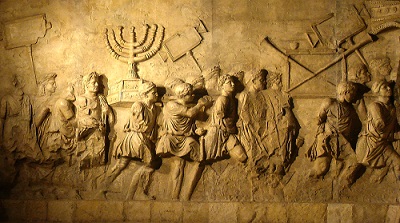The fast of the 10th day commemorates the day on which Nevuchadnezzar laid siege to Jerusalem during the first Temple period. The siege continued for 3 years until the Temple was ultimately destroyed on the 9th of Av.
If we fast to commemorate the destruction of the Temple, why do we also fast to commemorate the siege that was set 3 ½ years earlier? It seems a pretty minor event in comparison. It is stated that on Asara B’Tevet, it is not enough to fast in mourning of the destruction of the Temple, but we should be repenting for the actions that led to its destruction and working to rectify those sins. So, what exactly should we be thinking about?
G-d sends up warning signs before sending a punishment our way and it is our job to heed these warning signs and respond appropriately. Asara B’Tevet is about the warning signs of the destruction to come and the 3 year delay between the siege and actual destruction in order to give the Jewish people time to repent. We’re not fasting about what occurred because it is true that the destruction is far worse than the siege, we’re fasting to remind ourselves to pay attention to warning signs that G-d, in His kindness, sends us.
In the entire Torah scroll, Parshat Vayechi is unique in that there is no space between it and the preceding parsha. The general rule is that a new Sedra begins on a new line or separated by at least a nine letter space. This is known as a closed Parsha. What is indicated by the closure between Parshat Vayechi and the preceding Parsha, is the inability of Yaacov’s children to reflect and contemplate the impact of the events.
Even though we can’t always know what the message is because we no longer have prophets, we should at the very least recognize that everything that happens is a sign, and try to work to improve ourselves.
